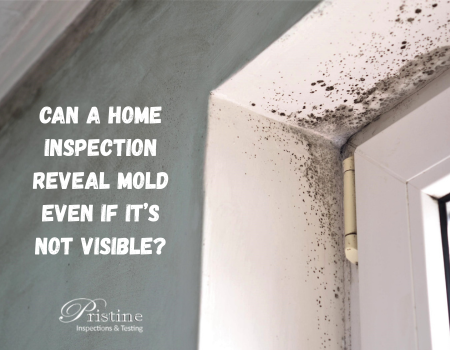When buying, selling, or maintaining a home, one of the biggest concerns homeowners have is the possibility of hidden mold. While mold growing in plain sight is easy to spot and address, the real challenge comes when it hides behind walls, under flooring, or inside air ducts. Many people wonder if a standard home inspection can detect mold, especially when there’s no obvious sign of it. The answer is — it depends. Let’s break down how home inspections work, what inspectors can find, and what additional steps might be necessary if mold is suspected.
What Happens During a Standard Home Inspection?
A home inspection is a visual evaluation of a property’s overall condition. Inspectors check essential components such as the roof, foundation, plumbing, electrical systems, HVAC units, and structural elements. They look for signs of damage, deterioration, and potential hazards — including areas prone to moisture, which could indicate mold risk.
However, it’s important to understand that a typical home inspection does not involve invasive techniques. Inspectors won’t cut into walls, lift floorboards, or peer inside hidden spaces unless specifically authorized. This limitation means that if mold isn’t visible on surfaces or causing noticeable odors, it might go undetected during a general inspection.
How Inspectors Spot Potential Mold Problems
Even though inspectors might not physically find hidden mold, they’re trained to identify warning signs that could indicate its presence. During their walkthrough, inspectors look for:
- Water stains on ceilings, walls, and floors
- Musty or earthy odors in certain rooms or areas
- Visible signs of water intrusion near windows, basements, or attics
- Peeling paint or bubbling wallpaper (often caused by trapped moisture)
- Condensation on windows or pipes
- Warped flooring or discolored drywall
If any of these conditions are noted, the inspector will typically recommend further evaluation by a mold remediation specialist or environmental testing company.
Should You Get a Mold Inspection Too?
If the home has a history of water damage, recent flooding, or persistent moisture problems, it’s wise to consider a dedicated mold inspection in addition to the standard home inspection. A mold inspection goes beyond the surface, often including:
- Air quality testing: Measures the number and type of mold spores in the air.
- Surface sampling: Swabs or tape lifts are taken from suspicious areas and analyzed in a lab.
- Moisture meter readings: Detect hidden dampness behind walls or under floors.
- Thermal imaging: Infrared cameras help identify temperature variations caused by moisture pockets where mold might grow.
These tools can uncover mold that isn’t visible to the naked eye but could still pose health risks or damage the home’s structure over time.
Why Hidden Mold Matters
Mold thrives in damp, dark, and humid environments — often behind drywall, under carpets, or inside HVAC systems. Even if it’s out of sight, it can release airborne spores that trigger allergies, asthma attacks, respiratory irritation, and other health issues, especially in sensitive individuals.
From a structural standpoint, prolonged exposure to moisture and mold can weaken wood framing, drywall, and insulation, leading to costly repairs if left unaddressed.
Signs You Might Have Hidden Mold
Even if your home looks clean and smells fresh, there are subtle indicators that mold might be lurking somewhere:
- Unexplained allergies or respiratory symptoms that worsen indoors
- A persistent musty odor, especially in closed or unused rooms
- Areas of the home that feel damp or humid, even with air conditioning
- Frequent condensation on windows or pipes
- History of water leaks or flooding, even if repaired
If you notice any of these signs, it’s a good idea to arrange for a professional mold inspection.
While a standard home inspection can reveal conditions that suggest the potential for mold, it won’t always detect mold that’s hidden from view. Inspectors can identify moisture issues, water damage, and other risk factors, but confirming the presence of hidden mold usually requires specialized testing and equipment.
If you’re buying a home, dealing with ongoing moisture problems, or experiencing unexplained health symptoms, consider scheduling a professional mold inspection in addition to your routine property checkup. Early detection and remediation can save you money, protect your health, and preserve your home’s value in the long run.

